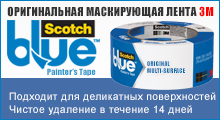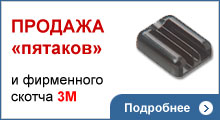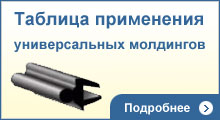| АВТОСТЕКЛА: продажа автостекол, доставка и установка автостекол в Москве |
в мире автостекол
| Email для связи: |
НОВЫЕ ПОСТУПЛЕНИЯ Приспособление для одновременной двухсторонней обработки острых кромок стекла 
1 800 руб.
СПЕЦ. ПРЕДЛОЖЕНИЕ Стекло опускное левой задней двери для Suzuki Grande Vitara YT4 05 г. (c кронштейнами) 
1 200 руб.
А ЗНАЕТЕ ЛИ ВЫ, ЧТО... На конвейере полиуретановый клей на автостекло наносит робот-автомат (шириной 6-8 мм), а на вторичном рынке замены стекол - ARG (шириной 10-12мм) - человек.
|
Chevrolet Camaro 20102010 Chevrolet Camaro. Vehicle type: Two-door coupe NAGS numbers*: Windshield part numbers DW1813 solar, bonded with moldings; DW1814 solar, bonded with moldings, remote start; and back glass DB11720 solar, antenna, heated, bonded with moldings Watch for: When installing the back glass, make sure there is no urethane residue on the pinchweld walls, or the moldings will not fit correctly. *With permission from National Auto Glass Specifications. Call NAGS at 800/551-4012 or visit www.nags.com. Windshield 2. Drape the fender with a fender cover and tape up any vulnerable areas on the vehicle to protect against possible damage. Tape up the defroster vents to prevent debris from falling into the openings. 3. To remove the rearview mirror, loosen the 25T Torx set screw in the mirror base, remove the wiring cover and slide the mirror off the bracket. 4. Remove the windshield-wiper nut covers. 5. Remove the windshield-wiper nuts using a 13-millimeter wrench or socket. Move the wiper arm in an up-and-down motion to break it loose from the post, or use a wiper-puller. Caution: Wipers can sometimes be hard to remove. To avoid stressing the post, use a wiper-puller. 6. The top and sides have an underside molding to replicate a pre-applied adhesive system (PAAS). The new windshield will come bonded with the moldings. 7. Remove the seven pull-up center-type retainers along the leading edge of the cowl panel. Release the top edge of the cowl panel from the lower retainer that comes bonded to the lower edge of the glass. Note: Before beginning windshield removal, verify the new windshield is the correct one and the urethanes and primers are current. Never use outdated products as this could jeopardize the structural integrity of the vehicle and the safety of its passengers.
Removal 9. The glass is fairly easy to cut out. The exposed edges are far enough away from the body that any tool can be used, but tape up the exposed painted panels to protect against possible damage. 10. Before cutting out the windshield, remove contaminants from the glass and pinchweld to prevent contact with the urethane. 11. Use the cutting tool of your choice to remove the glass from the adhesive bead. Note: When using any power tool, lubricate the cutting area with water. Spray the top and sides; then make your cuts. 12. After cutting the sides and top, cut out the bottom portion of the glass. Spray the bottom of the windshield with water at least 4-to-5 inches above the urethane on the glass, so the water flows down into the urethane while you make your final cut across the bottom of the windshield. Caution: Never use your head to push, as this could result in back and neck injuries. 13. Take the windshield out of the opening using a set of vacuum cups. Make sure the vacuum cups do not overlap any cracks in the glass. Lift the glass and place it on a windshield stand or suitable workstation. Installation 15. Dry fit the new glass to the opening. Mark your glass using a grease pencil or molding-retention tape. 16. Place your vacuum cups on the windshield in the appropriate location. 17. Set the windshield onto the old urethane. 18. With the windshield resting in the opening, make sure it is in the right spot. 19. Adjust both sides to the correct setting, marking the passenger’s side, then the driver’s side. Lift the glass and place it on a windshield stand or suitable workstation. 20. Follow the urethane manufacturer’s recommendations for installation. 21. Clean the inside of the windshield using a urethane manufacturer-recommended product. Do not touch the bonding area of the windshield after cleaning, prepping or priming it. 22. Wear powder-free Nitrile gloves to keep off chemicals. 23. Apply the glass prep and primer following the urethane manufacturer’s recommendations. 24. Using the tool of your choice, remove the original urethane bead, leaving 1-2 mm of existing urethane on the pinchweld. Make sure there are no contaminants and do not touch the pinchweld after prepping the area. 25. Apply the pinchweld primer only to the areas where needed, and follow the urethane manufacturer’s recommendations. Allow preps and primers to dry as recommended by the urethane manufacturer. 26. Apply a triangular bead of urethane to the same path as the freshly cut urethane on the pinchweld. Before cutting your V-notch, cut the tip off of your nozzle with a nozzle-cutter. With the cut nozzle, measure to the top of the roofline, and at 1/16-inch higher than the roofline, make a mark on the nozzle with a pen or marker. Notch the nozzle up to the marked line; this will give you the appropriate triangular bead. 27. Lift the windshield from the windshield stand or workstation using vacuum cups. Set the windshield on the urethane at the mark you made during your dry fit. Lower the driver’s side of the windshield onto the urethane and line it up with the dry-fit mark; it is now in place. 28. Press firmly to ensure a good seal. 29. Before re-installing the parts, check for leaks. Use a leak detector to go over the perimeter of the windshield. If you find a leak, apply pressure or add more urethane to the spot and ensure that the glass makes contact with the wet urethane. 30. Re-install the removed parts in reverse order. 31. Allow the urethane to cure according to the urethane manufacturer’s recommended cure time before returning the vehicle to the customer. Warning: Disregarding the safe drive-away time that your urethane manufacturer recommends could jeopardize the structural integrity of the vehicle and the safety of its passengers. 32. You have completed the removal and replacement of the windshield. B. Back glass 2. Check operation of the antenna and defroster. 3. Remove the interior quarter panels on both sides using your fingers. 4. Disconnect the antenna and defroster connectors. 5. The edges of the glass are exposed; take care not to damage the walls of the pinchweld during cutout. Tape up the perimeter of the glass and body. 6. Use the cutting tool of your choice to remove the glass from the adhesive bead. Note: When using any power tool, lubricate the cutting area with water. Spray the top and sides; then make your cuts. The glass is pretty close to the wall of the pinchweld, so, proper tool choice is imperative. Installation 8. Dry fit the new glass to the opening. Mark your glass using a grease pencil or retention molding tape. 9. Place your vacuum cups on the new back glass in the appropriate location. 10. Set the glass onto the old urethane. 11. With the back glass resting in the opening, make sure it is in the right spot. 12. Adjust both sides to the correct setting, marking the passenger side, then the driver side. Lift the glass and place it on a windshield stand or suitable workstation. 13. Follow the urethane manufacturer’s recommendations for installation. 14. Clean the inside of the back glass using a urethane manufacturer-recommended product. Do not touch the bonding area of the back glass after cleaning, prepping or priming it. 15. Wear powder-free Nitrile gloves to keep off chemicals. 16. Apply the glass prep and primer following the urethane manufacturer’s recommendations. 17. Using a pinchweld scraper, remove as much of the original urethane as the urethane manufacturer recommends. Make sure there is no urethane residue on the pinchweld walls, or the moldings will not fit correctly. Before removing the old urethane, make sure there are no contaminants and do not touch the pinchweld after prepping the area. 18. Apply the pinchweld primer only to the areas where it is needed. Allow preps and primers to dry as recommended by the urethane manufacturer. 19. Apply a triangular bead of urethane to the same path as the freshly cut urethane on the pinchweld. Before cutting your V-notch, cut the tip off of your nozzle with a nozzle-cutter. With the cut nozzle, measure to the top of the roofline, and at 1/16-inch higher than the roofline and bodyline, make a mark on the nozzle with a pen or marker. Notch the nozzle up to the marked line; this will give you the appropriate triangular bead. 20. Place your vacuum cups on the back glass in the appropriate location. Set the back glass in the opening. 21. The back glass is now ready to be decked. Press firmly to ensure a good seal. 22. Before re-installing the parts, check for leaks. Use a leak detector to go over the perimeter of the glass. If you find a leak, apply more pressure to the spot and ensure that the glass makes contact with the wet urethane. 23. Re-install the removed parts in reverse manner. 24. Check the operation of the back glass mechanical components 25. Allow the urethane to cure according to the urethane manufacturer’s recommended cure time before returning the vehicle to the customer. 26. You have completed the removal and replacement of the back glass.
By Bob Beranek |












